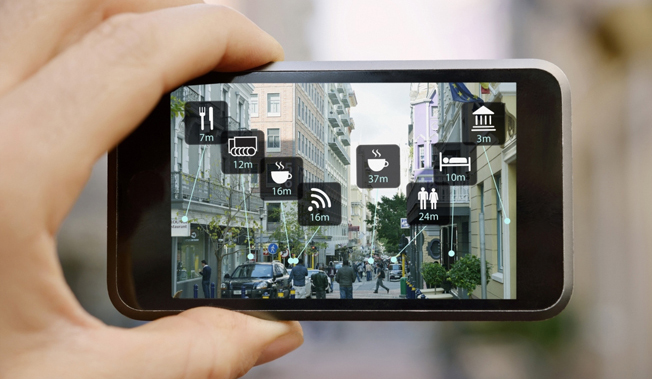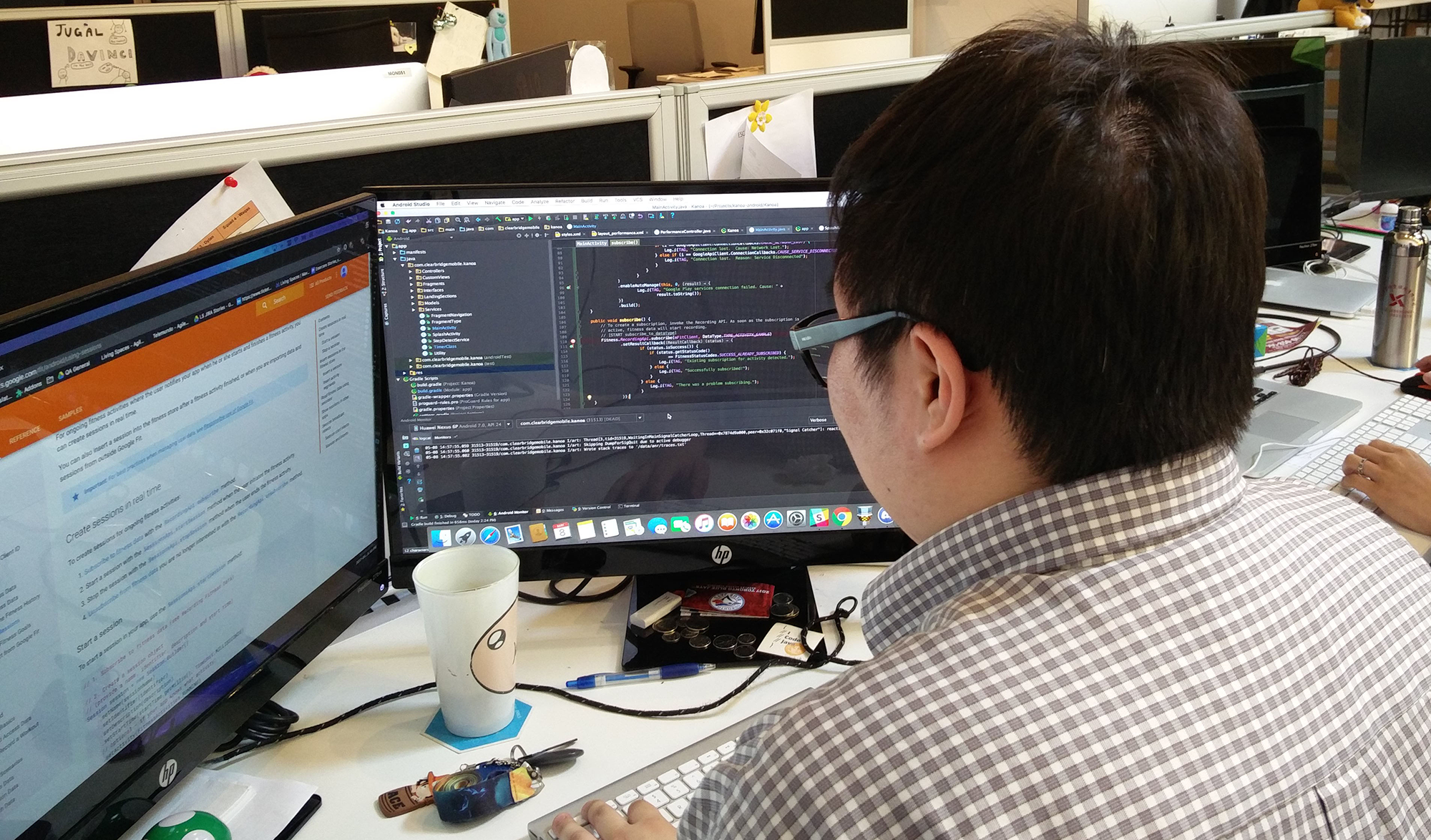On Christmas Day alone, consumers spent $196 million on apps, in-app purchases, and subscriptions in both the App Store and Google Play according to Sensor Tower. There was a significant increase of 12.3% over last year’s spending of approximately $174 million.
This shows that there has been continuous growth in the mobile app market as more companies are adopting the mobile-first mindset. However, as user behaviors are shifting at a rapid pace, companies must adapt in order to meet the demands of their users. Here are 7 trends that will define the mobile app development landscape in 2018.
1. Mobile Wallets and Microtransactions
According to Juniper Research, 1.5 billion mobile wallets were in use around the globe in 2017, and this is expected to continue through 2018.
This year, more users will turn to their mobile phones to make daily payments as people are less likely to carry cash. The mobile wallet is undoubtedly the way of the future, so if you haven’t considered offering mobile payments as an option to your customers, it’s probably a good move to make this year.
Mobile Architect, Marco Cirillo, explains we’ll also see more microtransactions, “We’re already getting used to paying money to play mobile games, for example, users will spend $2 to spin the wheel early, rather than waiting 24 hours. I expect to see more of this in a wide variety of apps, not just games. I imagine more news apps will give a number of free articles per day before users have to pay for more.”
2. A Focus On Security
There will be a huge push towards security in 2018. Both Apple and Google are committed to making security their top priority in 2018. It will be crucial, particularly concerning mobile payments, mobile banking, emails and the list goes on.
It’s important for mobile app security to be considered at the beginning of development with code encryption, secure back-end, and API, reputed payment gateway. You should always test your app in every possible scenario before releasing it to the app store.
Marco predicts that “security will be a top priority. The end of 2017 already trends in this direction, as a result of the Apple macOS High Sierra empty password hack and the Intel Management Engine hack.”
3. Chatbots & Artificial Intelligence
AI chatbots are becoming increasingly present in mobile apps as trailblazing companies such as Amazon have proven the success of AI in mobile. Large companies should have AI on their radar as consumer demands are trending in this direction.
CTO of Clearbridge Mobile, Sanjay Malhotra explains, “a year ago, building AI into mobile apps would have been extremely difficult and costly. Today, it’s a lot less expensive and we can incorporate Microsoft Cognitive Services, Google services, or Amazon services that use AI to make a mobile experience more intelligent, anticipate users’ desire and needs, and present information in context that we couldn’t do even a year ago.” 2018 will be the year of the enterprise chatbot as cognitive services have advanced exponentially.
Users are searching for more effortless interactions with brands and are now expecting channels of communications to be open 24/7. They want accessibility and availability when it comes to interacting with a company. 52% consumers prefer to interact with businesses via a messaging app rather than over the phone or in person. These changing user demands will encourage enterprises to implement human-machine communications that are both efficient and accurate to meet these demands.
This year, chatbots will become a lot more intelligent with the possibility of responding to voice commands or even making contextual recommendations. As chatbot APIs become more advanced in the year to come, security will be a priority for companies.
A recent Gartner study even revealed that every mobile app will incorporate AI to some degree within the next few years. Companies are quickly investing in AI with billions of dollars spent on AI acquisition over the past year.
Recommended Reading: The 10 Best Apps of 2017
4. Virtual & Augmented Reality
In an era where experiential retail is becoming more important, there are many ways AR and VR can enhance the way customers interact, navigate, and shop.
We’ll see more companies use AI to help users envision a product in their own home. A few examples include Ikea and Wayfair, helping customers visualize furniture in their own home. AR is especially accessible because it’s simple: it can be used on practically any smartphone with no extra equipment needed.
Marco Cirillo says, “Just last fall, Apple introduced Animojis and I’m sure there will be growth here as we find useful applications of AR. They are also pushing more resources towards expediting their AR glasses development.” These are just the earliest attempts at a new technology that may eventually become mainstream. Back in 2014, Google unveiled Google Glass and although consumers weren’t ready for such an innovative product, it seems that 2018 may be the year. Several months ago, Google revealed Google Glass Enterprise Edition (GGEE) that has been in the works for two years. This time, Google offers new opportunities to solve business problems. This signals a tipping point towards the wide adoption of AR wearables. A Forrester Research report affirms that millions of enterprise smart glasses will ship by 2025.
Additionally, we are seeing travel companies use it to create simulations of tropical escapes, realtors use it for virtual tours of homes for sale, and car companies use it for virtual test drives.
5. On-Demand Services
Non-game apps saw a higher growth rate than mobile games, with approximately 66% year-over-year growth, climbing to $38 million. This is mainly generated from on-demand streaming apps such as HBO NOW and Netflix. In 2017, users spent a shocking 98% more on entertainment apps compared to the year prior, according to Sensor Tower.
It also expands beyond streaming apps with users wanting other on-demand services such as haircuts, food, laundry, and so on. “Uber and AirBnb already corner the taxis and rent-a-bed markets, but I think Uber for tutors, tradespeople, or haircuts will see high growth.” Marco Cirillo states.
6. Surge of IoT
Analysts predict that IoT will grow from $157.05 billion in 2016 to $661.74 billion by 2021 and we’re just at the beginning stages of this growth.
Last year we predicted that IoT apps will surge along with smart home technology. This proved to be true in 2017 and will continue to grow in 2018 as homes get much more interactive. Sanjay Malhotra predicts that “devices will tell us what to do instead of waiting to be told.” Forrester Research has even predicted the IoT will become “the backbone” of customer value.
However, instead of explosive growth, this year will be about steady growth. Currently, companies are struggling with fragmentation and security issues that will need to be addressed this year. The retail, healthcare, and supply chain industries will experience the most growth with IoT: Retailers are taking advantage of the ability to interact with their customers in personal ways, the healthcare sector is using wearable devices, and supply chains are tracking products in factories. The future of IoT looks very promising and 2018 will show a positive trajectory as companies realize the full potential of IoT.
7. The Rise to Kotlin For Android App Development
Last May Google announced that it was adopting Kotlin as a high-level language for Android development. This open source language is based on Java Virtual Machine and can also be compiled to JavaScript source code.
Kotlin is both an object-oriented (OO) and functional programming (FP) language. It is compatible with OO and FP styles allowing developers to incorporate elements from each form. Kotlin offers support for higher-order functions, function types and lambdas, making it a great choice for functional programming.
There are several massive brands who have already switched to Kotlin including Amazon, Pinterest, Netflix, and Uber to name a few. Kotlin is still in its early stages of growth but Mobile Developer Alexey Redchets says, “Kotlin is quickly proving itself to be a superior programming language for Android applications. It is presenting Android Developers with the opportunity to experiment with modern programming.” Alexey also suggests that “the language will significantly impact mobile app development and will eventually replace Java”
An App Annie report that was released last fall revealed global app revenue and downloads in Q3 hitting record levels of $17 billion and $26 billion as a result of the adoption of the smartphone in emerging markets. The mobile app market doesn’t show any signs of slowing as the report forecasts that worldwide app downloads are likely to hit 240 billion and consumer spend will reach $100 billion by 2021.
The mobile app space is rapidly changing and as technology continues to evolve, it’s increasingly important for companies to stay ahead and maintain a competitive edge.







